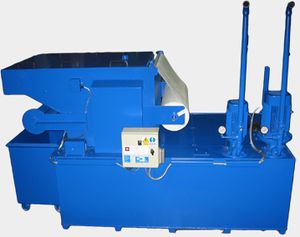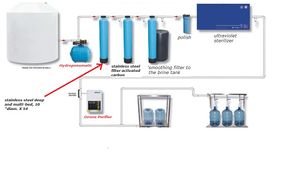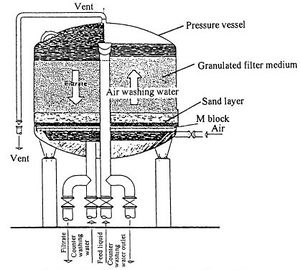Deep Bed Filters
A Deep Bed filter may be defined as a granular filter for removal of TSS from secondary treatment effluent using a media depth of at least four feet at a filtration rate of more than 2 gpm/ft2. Coarse media is normally used to encourage deep penetration of solids into the media bed. This allows for longer filtration runtimes. Simultaneous air and water backwashes are used to ensure cleaning of the filters as required. Severn Trent Services offers gravity, pressure and modular filters and pre-assembled gravity deep bed filters.
Media
Filter media is the heart of the filtration process. Severn Trent Services carefully selects a filter media which has an optimum size large enough to facilitate deep penetration of suspended solids, but small enough to prevent the solids from breaking through the filter bed. A 6-foot media bed allows for up to 2 pounds of solids per square foot of filter surface area before backwashing is required. The sand media has an effective size that falls in the 2-3 mm range and a maximum uniformity coefficient of 1.4. Rounded sand grains with a sphericity of at least 0.8 are used in this system. Severn Trent believes that scrubbing action between sand grains is the most effective way to clean the dirty filter media. A rounded sand grain will tend to rotate during backwashing, thereby, creating a vigorous scrubbing action to facilitate the release of the adhering solids.
Operation
Secondary effluent enters a filter at the top and is evenly distributed across the entire filter. As the wastewater passes through the filter bed, suspended solids are retained and stored in the voids between the sand grains. Accumulation of solids will decrease the void space in the filter media bed. As the filtration cycle progresses, additional energy is needed to maintain the required filtration rate indicated by an increase in headloss. When the headloss reaches the maximum available level and the filtration rate cannot be maintained, the filter must be removed from service and the media cleaned.
The backwash process of the deep bed filter is one of the most important aspects of the system’s design. The main part of the backwash cycle starts with the simultaneous application of backwash air at 5 icfm/ft2 and backwash water at 6 gpm/ft2 for 15 minutes. By the principle of an air lift pump, thousands of air/water columns are created across the filter bed which facilitates a uniform distribution of backwash water. At the end of the backwash cycle, the air stopped and the water rate continued for 5 minutes to purge the air out of the media bed.
Basic components
Filter Vessel: concrete or steel, round or rectangular- usually 14-18 feet deep with free board.
Filter Bottom: nozzleless design; stainless steel air headers and pipe laterals; plastic jacketed 5000 psi concrete T Block underdrains.
Filter Media: monomedia granular sand with 2-3 mm effective size at depths of 4-to-6 feet.
Support Layers: gravel in five layers totaling 18 inches deep in a reverse graded fashion.
Filter Controls: consist of split flow influent and standpipe effluent control. The mode is a uniform rate with open or closed valves.
Backwash Air: distributed across the entire area of the filter bottom, supplied by a positive displacement blower at a rate of 3-5 icfm/ft².
Backwash Water: supplied at a rate of 5-6 gpm/ft² with a low head centrifugal pump. The head loss across the filter bottom is 4.0 inches water column.
Filter Valves: pneumatic or electric control valves with double acting cylinders. Isolation valves can be included.
Instrumentation: PLC with human machine interface and multiple screens included. Also includes outputs for a centralized computer control and/or SCADA system. It also includes level switches, local panels and system alarms.
Filter Operation: automatic with manual overrides. Backwashing is time based.
Head Requirement: typically 4-6 feet of water but can be more or less depending on the specific application.
System Integration: works well with other treatment plant processes such as overall nitrogen removal by addition of supplemental carbon, phosphorous removal and virus removal.
Video


